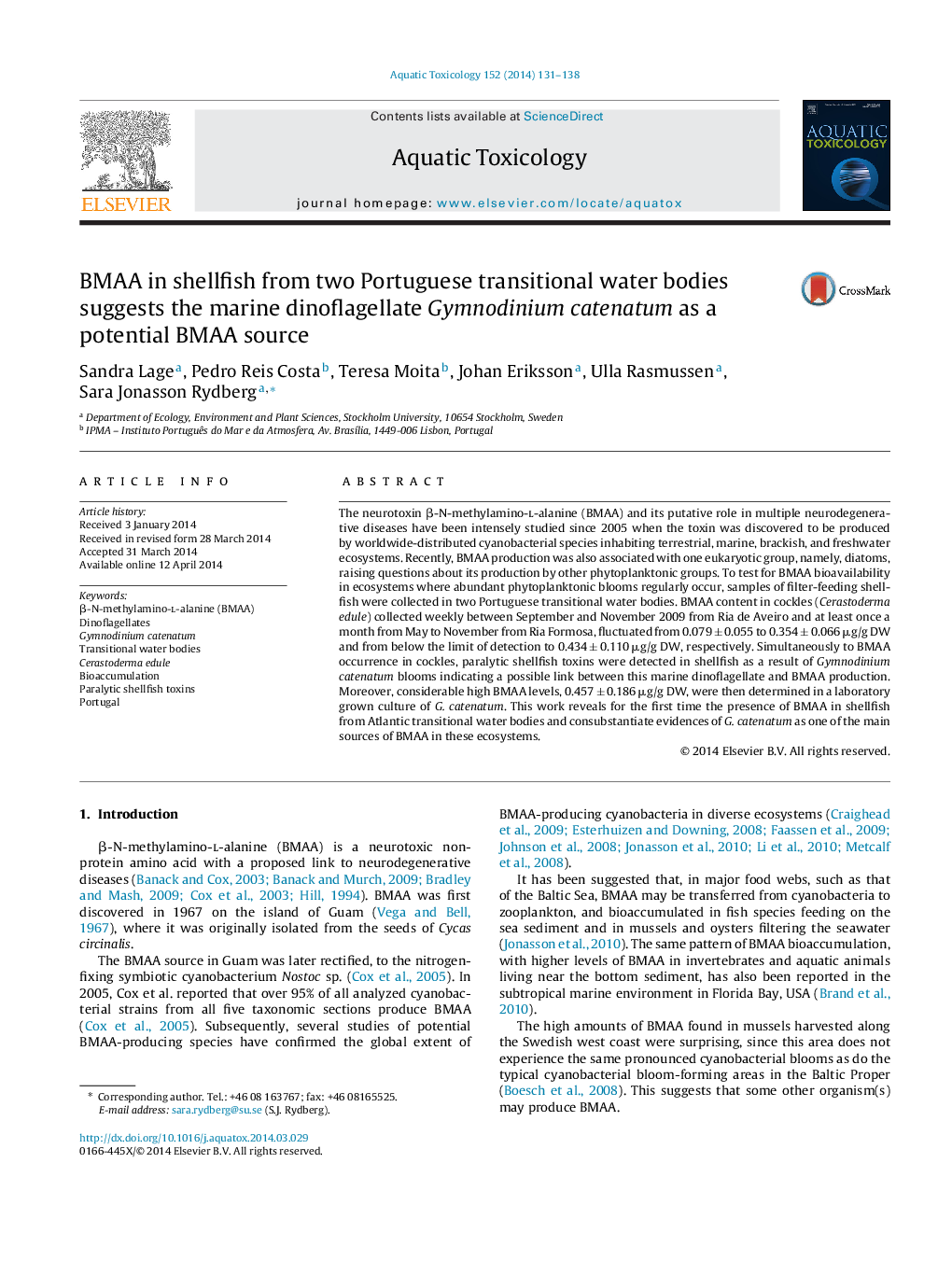| کد مقاله | کد نشریه | سال انتشار | مقاله انگلیسی | نسخه تمام متن |
|---|---|---|---|---|
| 6382378 | 1625953 | 2014 | 8 صفحه PDF | دانلود رایگان |
عنوان انگلیسی مقاله ISI
BMAA in shellfish from two Portuguese transitional water bodies suggests the marine dinoflagellate Gymnodinium catenatum as a potential BMAA source
دانلود مقاله + سفارش ترجمه
دانلود مقاله ISI انگلیسی
رایگان برای ایرانیان
کلمات کلیدی
موضوعات مرتبط
علوم زیستی و بیوفناوری
علوم کشاورزی و بیولوژیک
علوم آبزیان
پیش نمایش صفحه اول مقاله

چکیده انگلیسی
The neurotoxin β-N-methylamino-l-alanine (BMAA) and its putative role in multiple neurodegenerative diseases have been intensely studied since 2005 when the toxin was discovered to be produced by worldwide-distributed cyanobacterial species inhabiting terrestrial, marine, brackish, and freshwater ecosystems. Recently, BMAA production was also associated with one eukaryotic group, namely, diatoms, raising questions about its production by other phytoplanktonic groups. To test for BMAA bioavailability in ecosystems where abundant phytoplanktonic blooms regularly occur, samples of filter-feeding shellfish were collected in two Portuguese transitional water bodies. BMAA content in cockles (Cerastoderma edule) collected weekly between September and November 2009 from Ria de Aveiro and at least once a month from May to November from Ria Formosa, fluctuated from 0.079 ± 0.055 to 0.354 ± 0.066 μg/g DW and from below the limit of detection to 0.434 ± 0.110 μg/g DW, respectively. Simultaneously to BMAA occurrence in cockles, paralytic shellfish toxins were detected in shellfish as a result of Gymnodinium catenatum blooms indicating a possible link between this marine dinoflagellate and BMAA production. Moreover, considerable high BMAA levels, 0.457 ± 0.186 μg/g DW, were then determined in a laboratory grown culture of G. catenatum. This work reveals for the first time the presence of BMAA in shellfish from Atlantic transitional water bodies and consubstantiate evidences of G. catenatum as one of the main sources of BMAA in these ecosystems.
ناشر
Database: Elsevier - ScienceDirect (ساینس دایرکت)
Journal: Aquatic Toxicology - Volume 152, July 2014, Pages 131-138
Journal: Aquatic Toxicology - Volume 152, July 2014, Pages 131-138
نویسندگان
Sandra Lage, Pedro Reis Costa, Teresa Moita, Johan Eriksson, Ulla Rasmussen, Sara Jonasson Rydberg,